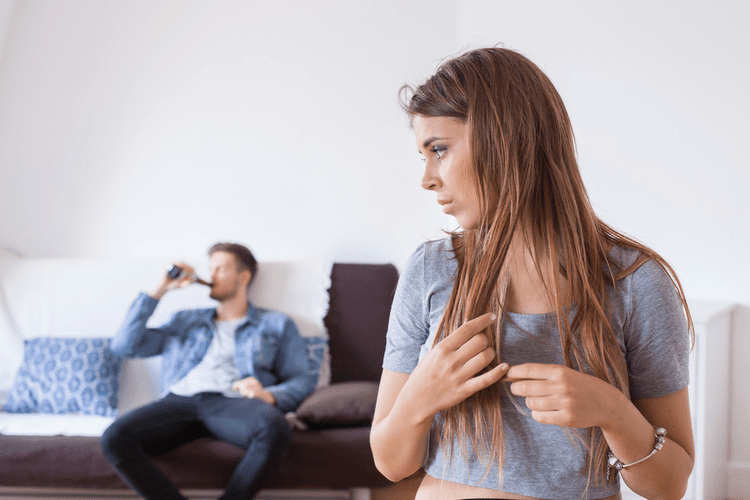Content
As a result, when you are confronted with those things, you may experience a very strong desire to drink or get high again. Some types of triggers are commonly found across most people in the recovery population. The most common trigger is experiencing the presence of a drug or alcoholic drink. Whether designing customer behaviors or your own habits, you’ll benefit from understanding the research I share from user experience design, behavioral economics, and neuroscience.
What are internal and external triggers in business?
External triggers involve places, people, routines, and situations. Internal triggers are emotional responses.
In doing so, you will be able to spot the different signs of addiction and protect yourself better in the future. Learn to engage in difficult situations with a focus on maintaining a positive relationship. Learn what is triggering for those around https://ecosoberhouse.com/ you, and try to avoid causing pain. Remember to respect an individual’s right to not share, or share on their own timeline. In the context of mental illness, “trigger” is often used to mean something that brings on or worsens symptoms.
Substance Use, Triggers and Relapse
Understanding the needs wants, and emotions of users are crucial in identifying internal triggers. By understanding what motivates a user, designers can identify potential internal triggers that will enhance the user experience. Although many people who seek treatment for addiction hope that they can stay sober afterwards, approximately 40 to 60 percent of people relapse. A relapse doesn’t mean that you failed or that the treatment wasn’t successful.

The cravings act as a reflex to external or internal triggers, and this response can even affect individuals who have abstained from drugs or alcohol for a long time. The world around us often houses external triggers that interfere with addiction treatment , but so does the world within us. Thoughts, feelings and moods can often make for triggers that are just as powerful as the ones we encounter in the environment. Triggers have a social, environmental, or emotional reaction that reminds them of their past drug and alcohol use. Some of the triggers will be people, places, harmful substances, and even scents that remind them of intense or distracting emotions.
Create an Internal or External Trigger
The opposite of numbing yourself is reconstructing your life in some way to eliminate those triggers. If you choose to go this route, be sure you’re doing so with the help of your counselor. For this type of numbing method to work, you must abstain from using the drug or drinking the alcohol. You may also respond to certain people or events in ways that don’t seem normal.
- While being a recovering addict, the cravings may be so high that the probability of relapse is very significant.
- Avoid taking another’s behavior personally nor making negative judgments about someone’s feelings and behavior.
- When combined, mindfulness and meditation can help individuals gain greater awareness of their thoughts, feelings, and behavior patterns, allowing them to address addiction triggers more effectively.
- The journey from addiction to recovery is full of many ups and downs.
- Objects in an individual’s everyday life may induce a craving.
- List anything that makes you think about using, but also things that create strong levels of stress and frustration.
Some are designed to relax the mind and some to relax the body. But the way the body and mind are connected, many relaxation methods can work on both the mind and the body simultaneously. While being a recovering addict, the cravings may be so high that the probability of relapse is very significant. Recognizing the warning signs before relapse is one of the best ways to intervene early and prevent it entirely.
Recognize the H.A.L.T. Symptoms
Exercise and physical activity can be incredibly beneficial in managing addiction triggers. Exercise releases endorphins that produce a natural “high,” which can provide an alternative to drugs or alcohol. Furthermore, regular exercise can help reduce stress, increase self-confidence, and structure internal and external triggers one’s daily routine. Mindfulness and meditation are two of the most effective coping strategies for managing addiction triggers. Mindfulness is a practice that encourages focus on the present moment and can help to reduce stress, improve concentration and increase emotional regulation.
Exhaustion or Other Sleeping Problems– During recovery,insomniais a common effect of withdrawal. Being exhausted can be not only an internal trigger for relapse, but can also make it more difficult to resist cravings and urges. If you are having problems sleeping consider practicinggood sleep hygieneand asking your recovery specialist about non-addictive sleeping medications. Fear or Anxiety– Fear and anxiety can lead to increased stress.Stress in recoveryis especially common, due to the physical and emotional changes that occur.
Learn to Relax in Any Situation
Our primary mental health program is for clients with or without a substance use issue and we currently accept clients with anxiety, depression, bi-polar 1, and borderline personality disorder. Our dedicated team of behavioral health technicians and peer recovery support members are passionate and credentialed. While many triggers can be negative experiences, it is important to note that positive events can trigger relapsing as well. There are many possible coping strategies you can try, but all should focus on reducing the impact of the trigger and the strength of emotional reactions. Ask about strategies that work for the person to relax and take care of themselves.

